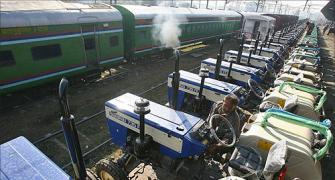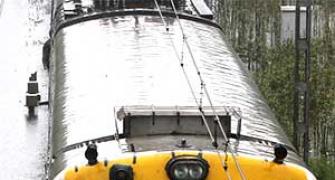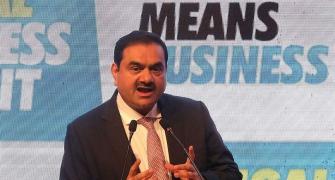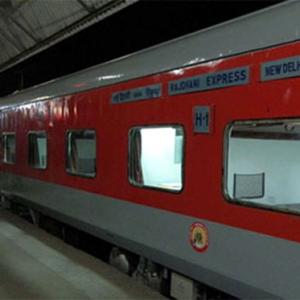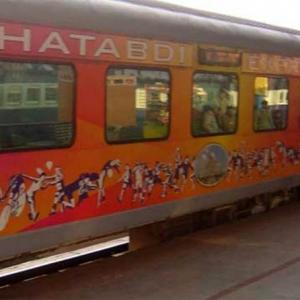What the railways need to do is to establish a clear link between higher fares and better service, says T N Ninan.
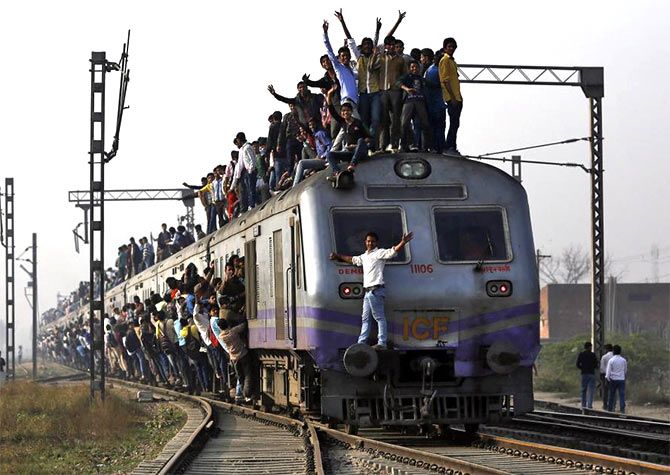
Long years of experience in rolling back price hikes of politically sensitive goods and services should have made it obvious to Suresh Prabhu, the railway minister, that he would be lucky to get away with his idea of flexible pricing of rail passenger services on selected trains.
In his first Budget, Manmohan Singh in 1991 had announced a sharp increase in fertiliser prices, only to be forced to partially roll them back -- prompting him to offer his resignation within weeks of having assumed office.
In 2003, Jaswant Singh tried a very modest five per cent increase in fertiliser prices, but had to roll back even that.
In between, Yashwant Sinha for no fault of his acquired the honorific of “Roll-back Sinha”.
And two years ago, Mr Prabhu’s predecessor had to roll back a 14 per cent hike in suburban fares.
What chance, then, of getting away with what is on average a steep 35 per cent hike, even if it is only on select trains?
As for surge pricing, what kind of “surge” starts when only 10 per cent of tickets have been sold, and reaches a 50 per cent fare increase when half the tickets are still unsold?!
This is not to argue against higher fares. The railways earn about Rs 50,000 crore on passenger services, while costs are said to be higher by about Rs 25,000 crore. If cost savings are not possible, fares have to go up by 50 per cent.
That holds true even on the suburban rail network. In Mumbai, you can get a monthly pass for commuting between Churchgate and Borivali (a distance of more than 40 km) for just Rs 215. Assuming a five-day week and therefore 22 working days in the month, this works out to Rs 5 for a single, one-way trip; on a public bus the fare for even the shortest distance would be as much or more.
So it is no surprise that Mumbai’s suburban service loses Rs 1,400 crore annually for servicing 7.5 million passengers daily -- a loss of about Rs 5
per passenger trip. In other words, the price of the monthly pass has to double if the service is to become viable.
Such hikes may be required for the health of the railway system, but they must be carefully engineered.
First, a pricing shortfall that has grown to mammoth proportions over a decade and more cannot be addressed overnight with a single fare hike. It has to be done in stages. Each price increase should be small, but the increases should not be infrequent -- that is the cardinal lesson to be drawn from the success of pricing reform in petrol and diesel.
Second, as far as possible a price increase should be linked to some passenger benefit -- a new amenity, faster timings, greater frequency, or better coaches -- and therefore could take the form of a surcharge.
Third, the lowest-cost fare option should not be touched -- though that option may offer progressively fewer seats.
Finally, the issues and options should be placed out in the open for discussion, along with the financial imperatives, so that the ground is prepared and the eventual decision on fares does not come as a shock to anyone.
What the railways need to do is to establish a clear link between higher fares and better service.
Mumbai’s suburban commuters travel in a manner that you won’t see anywhere else in the world. The squeeze is such that, it has been calculated, 14 people are made to fit into one square metre of floor space in a coach -- a figure that boggles the mind with regard to the limits of human possibility.
Elsewhere in the country, tens of thousands travel on the rooftops of coaches.
These are sub-human conditions of travel, and Mr Prabhu’s message should be that he will change them if passengers pay more.
Carrying conviction with that message is the only way in which price increases can be pushed through.
Image: An overcrowded train. Photograph: Reuters


